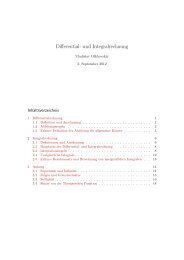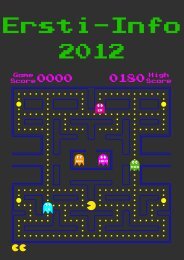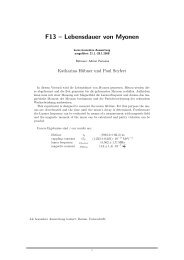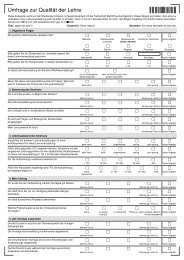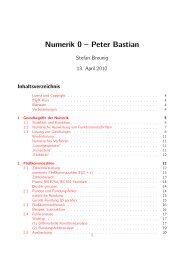Extrasolar Moons as Gravitational Microlenses Christine Liebig
Extrasolar Moons as Gravitational Microlenses Christine Liebig
Extrasolar Moons as Gravitational Microlenses Christine Liebig
Create successful ePaper yourself
Turn your PDF publications into a flip-book with our unique Google optimized e-Paper software.
CHAPTER 3. METHOD 17<br />
approximate a three-dimensional m<strong>as</strong>s distribution <strong>as</strong> many successive lens planes.<br />
Combining all this, the programme is very well equipped for simulating qu<strong>as</strong>ar<br />
microlensing (where the background light of a qu<strong>as</strong>ar is microlensed by individual<br />
stars of the strongly lensing foreground galaxy), <strong>as</strong> well <strong>as</strong> simulating strong lensing<br />
on the cosmological scale. Wambsganß (1999) provides a discussion of the algorithm<br />
and further references to its applications.<br />
3.1.2 The moonlens code<br />
The original microlens code is optimised for a huge number (∼ 10 6 ) of lenses<br />
(Wambsganß, 1999). Features like the underlying cell structure of the hierarchical<br />
tree code and the random lens generator are redundant for the simulation of planetary<br />
systems. On the other hand, it is fundamental to be able to choose the lens<br />
positions and m<strong>as</strong>ses to match realistic systems.<br />
These modification have been implemented and from then on this simplified<br />
version w<strong>as</strong> used, referred to <strong>as</strong> moonlens from now on. moonlens is capable of<br />
handling a chosen number of lenses (currently up to 10 2 ) at fixed positions. The<br />
primary lens h<strong>as</strong> unit m<strong>as</strong>s, where<strong>as</strong> all other lens m<strong>as</strong>ses are given in m<strong>as</strong>s ratios<br />
relative to this. By <strong>as</strong>signing a physical m<strong>as</strong>s to the primary lens, the physical<br />
m<strong>as</strong>s scale is determined for the set of lenses. The lenses are described in three<br />
parameters (relative m<strong>as</strong>s, x- and y-position in units of θE of the primary lens). So<br />
it is e<strong>as</strong>ily possible to simulate a given planetary system, for example our own (see<br />
figure 1.1). But we concentrate on the ternary lens c<strong>as</strong>e with extreme m<strong>as</strong>s ratios<br />
of 0.3 M⊙ : 10 −3 : 10 −5 , i.e. a subsolar m<strong>as</strong>s star, a Saturn-m<strong>as</strong>s companion and a<br />
satellite with 10 −2 Saturn m<strong>as</strong>ses.<br />
moonlens is written in Fortran77 and can be compiled with any standard Fortran<br />
compiler, for example g77 and gfortran. It consists of one main routine and several<br />
subroutines. Parameters are read in from an input file, so that no recompiling is<br />
necessary for changing the physical parameters. Processing time is of the order of a<br />
few CPU hours on a PC for a re<strong>as</strong>onable resolution (1000 × 1000 pixels, 2000 rays<br />
shot per pixel), when zoomed in on a planetary caustic. Output is currently given in<br />
two formats: FITS files are printed using the CFITSIO library and standard routines<br />
from the cookbook 2 . For alternative processing (and useful for control purposes) an<br />
ASCII matrix is written out. We used it with Gnuplot to create the colour plots in<br />
this thesis.<br />
3.2 Light Curves<br />
To investigate the effects that satellites of extr<strong>as</strong>olar planets have on microlensing,<br />
we must examine how the changed gravitational potential influences the light curves,<br />
because this is what we will eventually detect through observations. We analyse a<br />
2 he<strong>as</strong>arc.gsfc.n<strong>as</strong>a.gov/fitsio/



